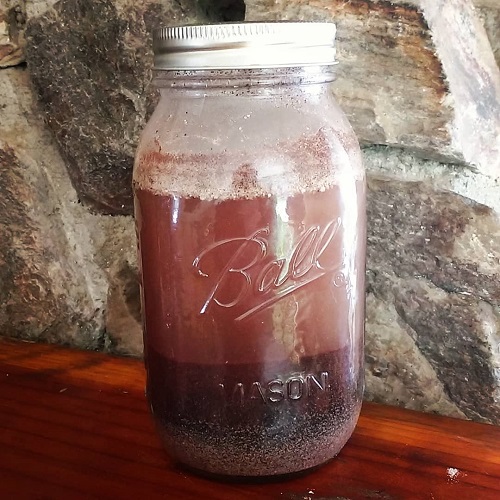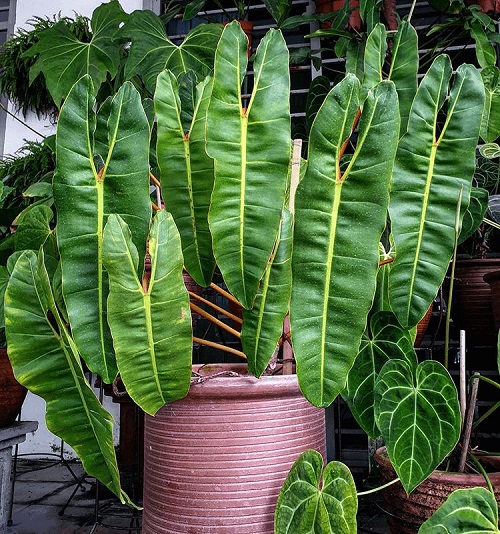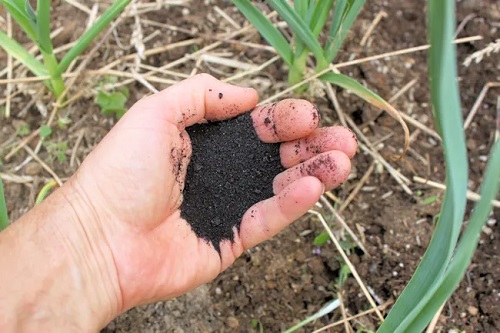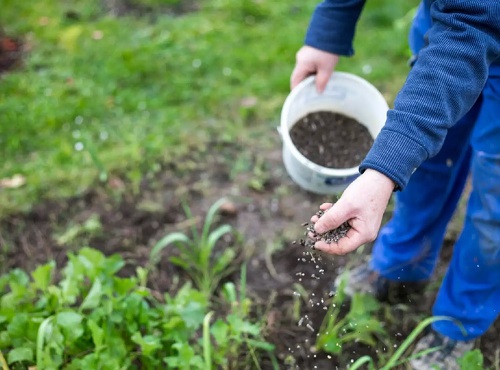Here are some fantastic Blood Meal Uses for Plants! Follow this chemical-free way to nourish your garden and keep it green all year round!

A blood meal is a natural fertilizer made from dried animal blood; it is widely used for plant growth and health. With its high nitrogen content, blood meal can enhance soil fertility, prevent pest infestations, and promote lush foliage and vibrant blooms. Learn more in detail about Blood Meal Uses for Plants below.
Find How to Use Bone Meal on Plants
What Is Blood Meal?

A blood meal is a product derived from the blood of animals that are slaughtered in meat packing plants. The blood is usually sourced from cows, but it can come from any animal used for meat. After the blood is collected, it is dried and processed into a powder form that can be sold as a blood meal.
Bloodmeal contains a high concentration of nitrogen and other essential nutrients, including phosphorus, potassium, calcium, magnesium, sulfur, iron, zinc, copper, manganese, and cobalt. It is also an excellent source of amino acids and vitamins, including B12, A, D, E, and K. Bloodmeal also contains various enzymes and hormones.
Read about Dried Banana Peel Powder Fertilizer at Home
Blood Meal Uses for Plants
1. Use as a Fertilizer High in Nitrogen content
Its main advantage as a fertilizer is its high nitrogen content, as indicated on the package’s NPK sequence. It either has a nitrogen-only composition or a structure that is primarily nitrogen with only small amounts of phosphorous and potassium.
As a result, it is very effective in addressing nitrogen deficiency in plants.
2. Pest Deterrent
A blood meal’s primary benefit is its odor, which is repellent to some animals. For instance, deer, rabbits, and moles can be deterred by the smell of blood meal.
If you discover that your garden crops are being eaten, simply sprinkle a small amount of blood meal on the leaves and around the plant’s base.
3. Improves Soil Quality
A blood meal is an excellent organic source of nitrogen, which helps to nourish the beneficial microorganisms present in the soil.
By adding blood meal to the soil, its organic content is increased, leading to better root development, improved drainage, water retention, and a decrease in nutrient leaching.
Overall, blood meal can significantly enhance the health and vitality of soil and the plants that grow in it.
Other Blood Meal Uses for Plants + Benefits
- A blood meal is entirely organic and not a chemical fertilizer.
- The blood meal keeps on adding nutrients for 1-3 months.
- It is great for acid-loving plants as it can acidify your soil.
- Using blood meal to improve soil quality or to repel pests can be done on a small scale with ease, as it is readily available in affordable and compact packages.
- A 3-lb. bag of blood meal can be purchased for less than $10, making it an inexpensive option for those who want to experiment with it in their gardens.
Discover DIY Potassium Fertilizer Recipes
How and When to Use Blood Meal

1. Determine if the Soil Requires Nitrogen
You can obtain a soil test kit from a nearby garden center or nursery and take a soil sample from your garden or plant container.
- Follow the instructions on the test kit carefully to obtain accurate results.
- The test will measure the levels of nitrogen, phosphorus, and potassium in the soil and provide you with important information.
- By taking the test, you can discover if there is an excess of nitrogen, adequate levels, a nitrogen deficiency, or if it is completely depleted.
2. Find if Your Plants Have a Nitrogen Deficiency
Examine their leaves for yellowing or wilting, which occurs when there is insufficient nitrogen to produce chlorophyll. Blood meal can be particularly beneficial to plants that require a lot of nitrogen.
- Radishes
- Squash
- Tomatoes
- Peppers
- Onions
- Cruciferous vegetables (broccoli, cabbage, cauliflower, kale, spinach, brussels sprouts)
- Corn
- Lettuce
3. Decide How Much Blood Meal is Required
When using a blood meal, it is important to apply it correctly. A good rule of thumb is to use 1 to 2 pounds per 100 square feet. It’s best to start with a lighter application of 1 pound per 100 square feet until you are more familiar with the product.
Blood meal can also be applied as a side-dressing, but it’s important to use caution and avoid overuse since side-dressing measurements are not always precise.
4. Follow the Instructions
Before applying blood meal to your plants or soil, it is important to follow the manufacturer’s instructions, as they may recommend mixing it with either soil or water.
Depending on the instructions, you may need to blend the blood meal into the top few inches of soil or dilute it with water and apply it to the plant or soil.
Although blood meal can be used as a natural animal repellent when sprinkled on soil, it is essential to mix or dilute it when adjusting nitrogen levels to avoid burning your plants.
Blood Meal as a Repellant for Outdoor Pests
If you’re experiencing problems with rabbits, deer, or other garden pests damaging your plants, applying a small amount of blood meal directly to the affected area may help deter them. However, it’s important to be mindful of the quantity used, as an excessive amount can burn the grass or plants.
- It’s also worth noting that blood meal can be washed away by heavy rain, so you may need to reapply it occasionally.
- While blood meal can effectively repel plant-eating pests, it can also attract meat-eaters like dogs, raccoons, or possums. Therefore, it’s important to use it carefully and consider alternative solutions if you’re concerned about attracting animals that could cause additional problems.
Points to Consider While Using Blood Meal
- Purchase good-quality blood meal: It’s recommended to buy USDA-approved products from local nurseries, garden centers, or home improvement stores. If purchasing online, it’s important to be cautious of products from countries with lax regulations on meat production, as blood meals obtained from such sources may spread disease.
Note: In the U.S., blood meal imported from Europe is prohibited due to the risk of Mad Cow disease. If high-quality blood meal is unavailable, alternative options like alfalfa meal or feather meal can be considered.
2. Apply blood meal in early spring: When leafy vegetables, flowers, and plants are experiencing a period of significant growth, they may require more nitrogen.
To support their growth, apply a blood meal in the spring. Since the nitrogen will be used up by the plants and gradually washed away, it’s recommended to reapply the blood meal every two months during the growing season.
Note: It’s important to avoid using blood meal year-round, as overuse can lead to plant burn or damage to your lawn. Instead, consider switching to a general fertilizer during the rest of the year to ensure healthy plant growth without the risk of excess nitrogen.
3. Do not use blood meal on seedlings or beans and legumes: While blood meal can be applied to the soil of many plants and vegetables, it is important to avoid using it on legumes such as peas and beans, as their roots contain bacteria that naturally add nitrogen back into the soil.
It is also not recommended to use blood meal on seedlings.
Note: It’s important to remember that while a blood meal can provide significant benefits to many plants, it’s not suitable for all types of plants and should be used judiciously.
Bone Meal vs. Blood Meal

Although blood and bone meals may appear similar at first glance, they have distinct differences that should be considered when deciding which to purchase.
Both are derived from animals and are commonly used as organic, slow-release fertilizers with a powdery appearance. Nonetheless, blood meal and bone meal can cause damage to plants when used excessively and may also attract dogs.
It is important to note that the variations between these two fertilizers are what will ultimately influence your choice.
Blood Meal
- Encourage healthy leaf growth
- Provide nitrogen to plants
- You can see growth in spring when applied to spring flowering bulb
Bone Meal
- Boost flowering and healthy root development
- Provide calcium and phosphorus to plants
- When planted in the fall, it can be applied to spring-flowering bulbs.
Learn How To Make Bone Meal Fertilizer At Home




